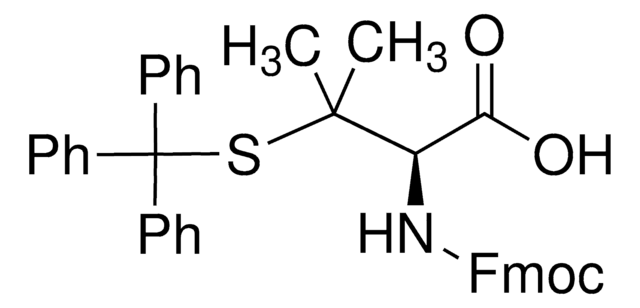P4875
D-Penicillamine
98-101%
Synonym(s):
3,3-Dimethyl-D-cysteine, 3-Mercapto-D-valine, D-(−)-2-Amino-3-mercapto-3-methylbutanoic acid
About This Item
Recommended Products
Quality Level
assay
98-101%
form
powder
mp
210 °C (dec.) (lit.)
solubility
H2O: 100 mg/mL
mode of action
cell wall synthesis | interferes
storage temp.
2-8°C
SMILES string
CC(C)(S)[C@@H](N)C(O)=O
InChI
1S/C5H11NO2S/c1-5(2,9)3(6)4(7)8/h3,9H,6H2,1-2H3,(H,7,8)/t3-/m0/s1
InChI key
VVNCNSJFMMFHPL-VKHMYHEASA-N
Gene Information
mouse ... Oprk1(18387)
Looking for similar products? Visit Product Comparison Guide
Related Categories
General description
Application
Biochem/physiol Actions
Other Notes
signalword
Warning
hcodes
Hazard Classifications
Repr. 2
Storage Class
11 - Combustible Solids
wgk_germany
WGK 2
ppe
dust mask type N95 (US), Eyeshields, Gloves
Certificates of Analysis (COA)
Search for Certificates of Analysis (COA) by entering the products Lot/Batch Number. Lot and Batch Numbers can be found on a product’s label following the words ‘Lot’ or ‘Batch’.
Already Own This Product?
Find documentation for the products that you have recently purchased in the Document Library.
Customers Also Viewed
Our team of scientists has experience in all areas of research including Life Science, Material Science, Chemical Synthesis, Chromatography, Analytical and many others.
Contact Technical Service









